Rhino poaching: a shift from reactive to proactive measures is happening to combat this problem but will this actually work?
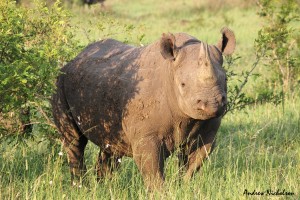
IntroductionSince the year 2000, in South Africa alone, 2801 rhinos have been poached for their horns. An astonishing 96% of these killings have happened between 2008 and the time of writing5. From these alarming figures alone, rhino poaching has been extremely prominent in the media worldwide and has also become a household topic in SA in recent times. South Africa is home to more than 90% of the remaining 20 000 southern white rhino and more than 40% of the remaining 5000 southern black rhino left in the world2. Put simply, SA houses 73% of all wild rhinos worldwide making it a vitally important country for rhino conservation9.Initially it was believed in many parts of East Asia that ground up rhino horn dissolved in water could be used as a form of an aphrodisiac. Science and medicine have proved time and time again that the horn, which is actually keratin, has no medicinal value whatsoever. In traditional Chinese medicine, it is believed that rhino horn is able to cure specific types of fever and diseases. That paired with the increasing wealth of these economies has seen a significant increase in the demand for this diminishing resource1. The horn is also used to make ornamental dagger handles in Yemen2. It would seem that in more recent times there has been a significant shift from the traditional medicinal properties belief to that of ingesting the ground up horn as a status symbol.Over the past few years the value of a rhino horn has escalated significantly. According to Child4, illegal traders earned $5000/kg of rhino horn in 2009, $10 000/kg in 2010, rising to $20 000/kg by the end of 2011. More recent studies suggest that the horn is now estimated to be worth approximately $65 000 to $100 000 per kilogram9. To put things into perspective, rhino horn is now worth more, per unit weight, than gold, diamonds or cocaine2.Another threat, often overlooked, is that private land owners are disinvesting in rhinos, no longer wanting to take un-necessary risks by keeping them, thus showing a declining incentive to conserve rhinos3. Currently, there are over 400 private rhino populations in SA6.Until recently, most actions to tackle rhino poaching were as a result of reactive measures; many still are. In this form, a reactive measure can be understood as the actions that are taken once a rhino has already been poached, often in an attempt to arrest the poacher/s. Examples include training of more field rangers, anti-poaching units, sniffer dogs and the funding of these initiatives. A proactive measure in this article, therefore, can be assumed as any measure that is taken in an attempt to intercept poaching activities and prevent actual killings. Examples of these include translocations, layered voice analysis testing, social media, aerial patrols and informants. It is also imperative to take note that, because of the severity of this problem, the number of people affected and its prevalence in the media and on the Internet, this has become a worldwide issue, not just a debate within and between Africa and Asia. Lastly, a brief insight into the future of South Africa’s rhinos will be touched on and a conclusion will be drawn with the author’s opinion on the situation.Anthony and Spence1 wrote: “It is not an exaggeration to say that every rhino on the planet is now in mortal danger. Unless something fundamental changes, and quickly, every last one in the wild will eventually be killed.” These words reverberate through this literature.
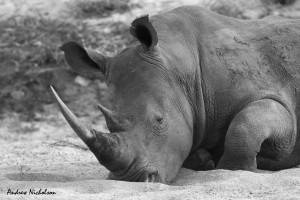
Reactive measures and Proactive techniquesSince 2008, conservationists throughout SA have been forced to focus their attention on the increasing number of rhinos being poached in their country. Naturally, the first steps that were put in place were reactive in nature resulting from a sudden crisis that few could have predicted. Many of these reactive techniques have involved building anti-poaching teams. If nothing else, they are certainly a deterrent factor to poachers. With clear security presence, protecting all other animals, not only rhinos, the investment into anti-poaching teams cannot be underestimated.Currently, a huge amount of funding has been raised by various campaigns and initiatives worldwide in support of these anti-poaching operations. Much of this has been directed to SANParks in order to assist them with their rhino projects. Soon, there will come a time that donors stop supporting such campaigns because poaching figures still continue to rise astronomically. Is this money being used effectively and is this the best approach? Perhaps it should rather be used to educate people in East Asia but how does one change a cultural belief?It would seem as though greed is one of the key issues in this global saga, money being an eternal motivator. Various poaching syndicates are unfairly approaching unemployed, poverty stricken individuals and using them as a means to an end. Although this is not always the case, perhaps some poaching is being done as a last resort to survive. The going rate in communities is approximately R35 000 that is paid to a poacher per horn. For many individuals, that is enough to feed a family for an extended period of time. With a large amount of poverty in South Africa and unemployment rates escalating, finding people that are willing to sacrifice being caught while going out to poach a rhino is not difficult, as the benefits potentially outweigh the consequences.There seems to be a current trend among conservationists and industry leading organisations to try and think out of the box and to come up with unique methods to assist in protecting the rhino species. It appears that these methods have an underlying theme and that is the nature of their so-called proactive approach. In theory, this sounds too good to be true but are the results going to be much different? So often, one hears the phrase, “prevention is better than cure” but this is often a lot easier said than done.
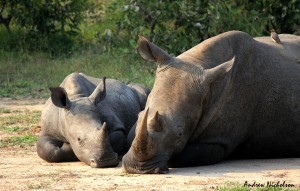
Social media has and will continue to play a role in rhino poaching. After it was discovered that posting pictures with the locations of the impressive species on social media platforms was being carefully watched and monitored, many marketing teams and organisations have been warned against continuing to do so. On the contrary, social media could rather be seen as a powerful tool. A large amount of funding and awareness has directly resulted from what is available online. Given the power of the Internet, especially among younger people, many of which seem to be the most common end user, social media is being used by some to effectively try and change cultural beliefs in South East Asia. A brilliant YouTube video has recently been compiled with former NBA star and Chinese basketball icon Yao Ming trying to educate those within his culture of what damage is being done in Africa due to rhino horn consumption. Another similar video starring world-renowned actor Jackie Chan delivers the important message of stopping the slaughter. Are these kinds of initiatives strong enough to entertain the thought of changing a cultural belief in East Asia? While optimism would be the ideal, realism is certainly more applicable.DiscussionUnfortunately, as proven over time, arresting poachers is NOT solving the problem. The percentage increase in the number of arrests each year is somewhat overshadowed by the increase in number of rhino deaths. If arrests were solving the problem, surely we would be starting to see a significant decrease in animals poached per year by now? It is clear that there are a number of levels to progress through in order to arrest a kingpin who spearheads advanced syndicates. Most arrests are happening at the lower levels of this chain. The most effective results will be felt if organised crime syndicates can be successfully prosecuted. The actual poachers, in many instances have no idea who is sitting at the top of these syndicates.Currently the number of rhino births per year exceeds the number of rhino deaths, however, it is estimated that 2014/2015 is going to be the tipping point in the rhino-poaching saga where this starts to reverse. This will mean that as a species, rhino numbers will no longer be rising per year. Unfortunately then, it could be said that the Southern African white and black rhino are certain to go extinct unless critically important preventative measures are put into place6.Many strongly support the notion of Herbig7, who argued that surely the words “conservation” and “reactive successes” in the same sentence could be regarded as somewhat of an oxymoron? It is clear that conservation success, in this instance, is measured in the number of arrests made per year, whereas, the number of deaths prevented should ultimately be the focus. Sure, arrests do help but will it solve the current rhino crisis in South Africa?
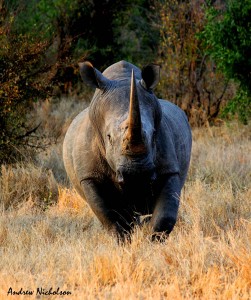
The Future for South Africa’s RhinosThe intensity of this global problem is perhaps misunderstood. That fact that it is not confined to the borders of one country but rather a number of them, each of which currently face different challenges, makes it that much more complex. There is a huge cultural mix between various affected parties, each nationality confined by different legislation. What this also means is that there is no one best solution to the problem. Each country that is home to rhinos will need to adopt a cocktail of different techniques to be effective in their fight.Much debate surrounds suggestions of farming rhino horn. Although this would only be possible by legalising the trade of rhino horn altogether, will it really be effective? This is no quick fix in order to assist in the conservation of the species. According to enquires by Anthony and Spence1, there are not nearly enough rhino left in the world to justify legalising the trade and attempt to flood the market. They state: “The insatiable demand for horn in the East means that the legal supply from the remaining rhinos wouldn’t even begin to satisfy the demand, and the poachers would just continue until they were all gone.” On the contrary, Child4 believes that a legal trade in rhino horn will provide substantial funding for private and state conservation in SA. The increase in supply and reliability will bring down the global price and thus the legal trade could displace the illegal trade. Poor communities could be empowered in the process if they are properly managed. Many others share a similar view. According to Leake8 and Duffy et al.6 , these plans are backed by the South African government. It is expected to promote these thoughts by submitting a trading proposal when it hosts the next meeting of CITES, the UN body overseeing trade in endangered wildlife in 2016. This debate falls outside the scope of this article. Either way, this intervention is still some time away from happening, if it ever does.While this article seems to focus on the effects extinct rhinos might have on us as humans, future studies could be conducted on what effect extinct rhinos may have on the ecosystem as a whole. It may be extremely tough to imagine life on earth without the rhino species, but what about specific organisms, insects, grasses and other animals which might be affected in the process? Rhinos provide the perfect feeding and breeding grounds for both the Yellow-billed and Red-billed Ox-peckers. Other examples might include a specific type of filarial fly only found on the Southern black rhino and the various tick species which thrive on using rhino as a host. Will the “balance” of the eco-system be in jeopardy without the rhino?As an individual, one feels obliged to try and step in and make a difference in saving these prehistoric looking creatures because unfortunately, our fellow human beings have placed these animals at huge risk of becoming extinct. In the same breathe, it must not be forgotten that without influential people such as Dr. Ian Player, the Southern white rhino could have been extinct about 2 decades ago. This won’t be the first time this species has flirted with extinction which shows rhino conservation in SA in the past has been hugely successful4.ConclusionIt is clear that despite a number of efforts, both reactive and proactive, to protect rhinos in SA, there is an ever-increasing threat of extinction of this magnificent species. It is also evident that a lot of challenging questions were posed without any obvious answers. One certainty is that at least a tangible object is being measured and therefore we, as humans, should be able to monitor and manage the threat of its demise accordingly.While it would be great to hope that SA conservation efforts alone can save the species from extinction as we have seen in the past, the author feels it would take a lot more than that alone. A change in mind-set and consumption at the source of the demand is fundamental. Ideally, it would be great if the “trend” of rhino horn ingestion would pass… but would this be to the detriment of another species and is this likely to happen with the rising value of the resource? Only time will tell. That does not mean that we as mankind can wait for the time to pass.Conservation initiatives and SANParks might have to re-look at their allocation of funding and also their definition of rhino poaching success. There is a strong place for the reactive techniques, especially as a deterrent (despite the law enforcement and legal justice system process that must be followed) but this is not the place for conservation. Those individuals should be committed to preserving the species. Pro-active measures perhaps need to follow up the chain of command of these syndicates dealing in the substance through intelligence collection, leading to breaking that chain. Pro-active measures should prevent rhino deaths and look into ways of changing beliefs, promoting the fundamental importance of the species, its role and impact on the environment and attempt to change legislation.There is no single panacea to this horrible surge but a multi-pronged attack is what is required to now save these amazing beasts. If we continue to do the same thing we will continue to get the same results, and those results will see the end of a species; the end of part of SA’s natural heritage.
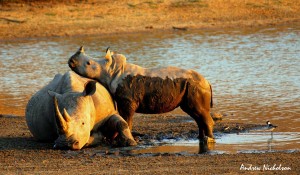
Note from the author - Andrew NicholsonThe above text represents my personal thoughts and feelings at the time of writing. I hope that I can shed some light on this controversial topic from what I have learnt from living in the bush and working within the industry. While I would like to remain positive and optimistic about the future of SA’s rhinos, sometimes being realistic is more important. I will continue to do everything possible in order to save this species. I still consider myself an activist for our rhinos and have assisted in raising approximately R820 000 for SANParks and other rhino conservation projects through a campaign a friend of mine Lee-Anne Davis started, which is called “Our Horn is NOT Medicine.” References1: Anthony, L & Spence, G. 2012. The Last Rhinos: The Powerful Story of One Man’s Battle to Save a Species. Basingstoke and Oxford: Sidgwick & Jackson.2: Biggs, D., Courchamp, F., Martin, R. & Possingham, H. P. 2013a. Legal Trade of Africa’s Rhino Horns. Science Magazine [Online] 339(6123): 1038-1039. Available: http://www.sciencemag.org.ez.sun.ac.za/content/339/6123/1038.full [2014, March 1].3: Biggs, D., Courchamp, F., Martin, R. & Possingham, H. P. 2013b. Rhino Poaching: Supply and Demand Uncertain - Response. Science Magazine [Online] 339(6123): 1038-1039. Available: http://www.sciencemag.org.ez.sun.ac.za/content/340/6137/1168.2.full [2014, March 1].4: Child, B. 2012. The sustainable use approach could save South Africa’s rhinos: commentary. South African Journal of Science, 108(7): 1-4.5: Department of Environmental Affairs, South Africa. 2014. [Online]. Available: https://www.environment.gov.za/mediarelease/rhinopoaching_statistics_17jan2014 [2014, March 14].6: Duffy, R., Emslie, R. H. & Knight, M. H. 2013. [Online] Rhino Poaching: How do we respond? Evidence on demand: Climate and Environmental Infrastructure. Available: http://eprints.soas.ac.uk/17837/1/EoD_HD087_Oct13_Rhino_Poach_Response.pdf [2014, February 15].7: Herbig, F.J.W. 2008. Conservation crime: South African concerns and considerations from a criminological perspective. Acta Criminologica, 21(3): 52-64.8: Leake, J. 2014. Farmed rhino could curb poachers. Sunday Times (London, England), 26 January: 19.9: Save the Rhino. 2014. [Online]. Available: http://www.savetherhino.org/rhino_info/poaching_statistics [2014, February 9].

